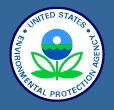Home > Press > EPA Seeks Data About Nanoscale Materials
 |
Abstract:
What are the human health and environmental risks and benefits of nanoscale chemical products? That's what EPA wants to find out with its just-announced Nanoscale Materials Stewardship Program (NMSP). Engineered nanoscale materials range in size from 1-100 nanometers (nm), and may have very different properties than the same materials at a larger scale.
EPA Seeks Data About Nanoscale Materials
Washington, DC | Posted on January 28th, 2008"This program will help strengthen the scientific understanding of nanoscale materials and allow the EPA to more quickly assemble the information needed to ensure appropriate oversight of the products of this promising technology," said Jim Gulliford, EPA's Assistant Administrator for Prevention, Pesticides and Toxic Substances. "Participation in this program can help assure the responsible development, use, and acceptance of these materials in the marketplace."
The program calls on manufacturers, importers, processors, and users of engineered nanoscale materials to report to EPA key information about these materials within six months. The agency will evaluate the information to help ensure the safe manufacture and use of these nanoscale materials.
EPA will also work with manufacturers, importers, processors and users of nanoscale materials to develop test data to provide a scientific basis for assessing the hazards, exposures, and risks of nanoscale materials. The NMSP will complement and support EPA's new and existing chemical programs under the Toxic Substances Control Act (TSCA).
The NMSP includes, but is not limited to, existing chemical nanoscale materials manufactured or imported for commercial purposes as defined by TSCA. EPA encourages manufacturers and importers of new chemical nanoscale materials, which are subject to TSCA reporting requirements prior to manufacture, as well as researchers to consider reporting under the NMSP. The NMSP will help provide a firmer, scientific foundation for regulatory decisions by encouraging the development of key scientific information and use of risk management practices in developing and commercializing nanoscale materials.
Information on NMSP: epa.gov/oppt/nano/stewardship.htm
For more information under the Nanotechnology under the Toxic Substances Control Act: epa.gov/oppt/nano
####
About EPA
The mission of the Environmental Protection Agency is to protect human health and the environment. Since 1970, EPA has been working for a cleaner, healthier environment for the American people.
EPA employs 17,000 people across the country, including our headquarters offices in Washington, DC, 10 regional offices, and more than a dozen labs. Our staff are highly educated and technically trained; more than half are engineers, scientists, and policy analysts. In addition, a large number of employees are legal, public affairs, financial, information management and computer specialists. EPA is led by the Administrator, who is appointed by the President of the United States.
For more information, please click here
Contacts:
Suzanne Ackerman
(202) 564-4355
Copyright © EPA
If you have a comment, please Contact us.Issuers of news releases, not 7th Wave, Inc. or Nanotechnology Now, are solely responsible for the accuracy of the content.
| Related News Press |
News and information
![]() Researchers develop molecular qubits that communicate at telecom frequencies October 3rd, 2025
Researchers develop molecular qubits that communicate at telecom frequencies October 3rd, 2025
![]() Next-generation quantum communication October 3rd, 2025
Next-generation quantum communication October 3rd, 2025
![]() "Nanoreactor" cage uses visible light for catalytic and ultra-selective cross-cycloadditions October 3rd, 2025
"Nanoreactor" cage uses visible light for catalytic and ultra-selective cross-cycloadditions October 3rd, 2025
Govt.-Legislation/Regulation/Funding/Policy
![]() New imaging approach transforms study of bacterial biofilms August 8th, 2025
New imaging approach transforms study of bacterial biofilms August 8th, 2025
![]() Electrifying results shed light on graphene foam as a potential material for lab grown cartilage June 6th, 2025
Electrifying results shed light on graphene foam as a potential material for lab grown cartilage June 6th, 2025
![]() Institute for Nanoscience hosts annual proposal planning meeting May 16th, 2025
Institute for Nanoscience hosts annual proposal planning meeting May 16th, 2025
Announcements
![]() Rice membrane extracts lithium from brines with greater speed, less waste October 3rd, 2025
Rice membrane extracts lithium from brines with greater speed, less waste October 3rd, 2025
![]() Researchers develop molecular qubits that communicate at telecom frequencies October 3rd, 2025
Researchers develop molecular qubits that communicate at telecom frequencies October 3rd, 2025
![]() Next-generation quantum communication October 3rd, 2025
Next-generation quantum communication October 3rd, 2025
![]() "Nanoreactor" cage uses visible light for catalytic and ultra-selective cross-cycloadditions October 3rd, 2025
"Nanoreactor" cage uses visible light for catalytic and ultra-selective cross-cycloadditions October 3rd, 2025
Safety-Nanoparticles/Risk management
![]() Onion-like nanoparticles found in aircraft exhaust May 14th, 2025
Onion-like nanoparticles found in aircraft exhaust May 14th, 2025
![]() Closing the gaps — MXene-coating filters can enhance performance and reusability February 28th, 2025
Closing the gaps — MXene-coating filters can enhance performance and reusability February 28th, 2025
|
|
||
|
|
||
| The latest news from around the world, FREE | ||
|
|
||
|
|
||
| Premium Products | ||
|
|
||
|
Only the news you want to read!
Learn More |
||
|
|
||
|
Full-service, expert consulting
Learn More |
||
|
|
||








